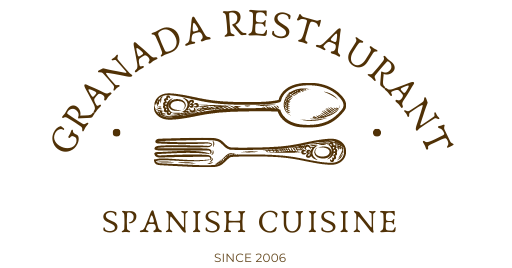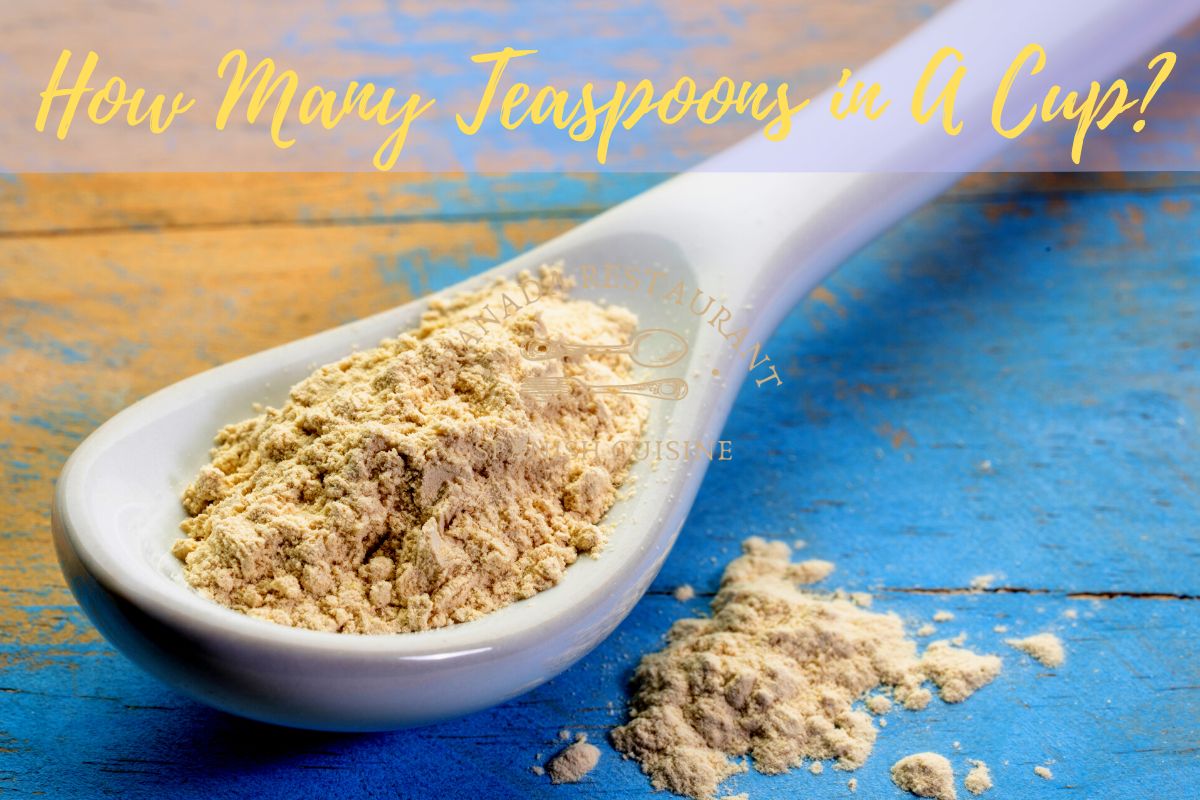Are you a home cook needing a useful conversion for measuring ingredients? Knowing the equivalent measurements for teaspoons and cups is essential when following recipes.
But how do you determine exactly how many teaspoons in a cup? We’ll answer that and more, so read on to find all the information you need on this common baking question.
Average Measurements of A Teaspoon
The average measurement for a teaspoon in the United States is 5 milliliters or approximately 0.17 fluid ounces. However, it’s important to note that the actual volume of a teaspoon can vary slightly depending on factors such as the shape and size of the spoon. Additionally, in other countries, the volume of a teaspoon may be different than in the United States. Therefore, measuring spoons is always a good idea to ensure accurate measurements when cooking or baking.
How Many Teaspoons in A Cup?
The answer is not as straightforward as you might think when converting teaspoons to cups. That’s because a cup is a unit of volume, and a teaspoon is a unit of measurement. To convert from one to another, you need to know the density of the ingredient you’re measuring. For example, a cup of sugar weighs about 7 ounces, while a cup of flour weighs about 4.5 ounces.
In general, there are around 48 teaspoons in one cup. However, this can vary depending on the type of ingredient you’re measuring and its density. For example, if you’re measuring a teaspoon of sugar or salt, the number will be slightly higher than if you’re measuring a teaspoon of flour or baking powder.
|Do you know: How many tablespoons in 1/2 cup?
Tips for Accurately Measuring Ingredients
To accurately measure ingredients, try to stick to using measuring cups and spoons as much as possible. This is especially important when measuring dry ingredients like flour, sugar, salt, and baking powder. Additionally, always measure your ingredients on a flat surface to avoid spills or messes.
Also, remember that milliliters and fluid ounces are not the same things. As such, use the appropriate measuring device for each ingredient. For example, if you’re using teaspoons to measure sugar, you should use a teaspoon with a capacity of 5 milliliters. On the other hand, if you’re measuring flour, you should use a teaspoon with a capacity of 4.5 fluid ounces.
Finally, it’s always best to double-check your measurements before adding them to the recipe. This will help ensure accurate results and help you avoid wasted ingredients.
5 Reasons You Should Know The Number of Teaspoons in A Cup
- It helps you accurately measure ingredients for recipes.
- Knowing the equivalent measurements of teaspoons and cups will ensure that your baked goods turn out just as tasty as expected.
- Converting teaspoons to cups is especially important when baking cakes, cookies, and other desserts where precision is key.
- Being aware of the density of different ingredients is also important. This will help you ensure that your measurements are accurate and that you get the desired results.
- Knowing how to convert teaspoons to cups properly can save you time and money by ensuring your ingredients are accurately measured.
Check out more about Soapstone Oven at Specksteinöfen Store
Is It Important to Know How Many Teaspoons in A Cup?
Knowing how many teaspoons are in a cup is essential for anyone who wants to master the art of cooking and baking. Not only will it help you accurately measure ingredients, but it will also ensure that your recipes turn out just as delicious as expected. So if you want to perfect your culinary skills, know the equivalent measurements of teaspoons and cups. It’s a small detail that can make a huge difference in the results of your recipes!

Misconceptions People Have when Estimating how Many Teaspoons in A Cup
One of the most common misconceptions when estimating how many teaspoons are in a cup is that all spoons are the same size. While standard measurement spoons are generally about the same size, slight variations may depend on the manufacturer. Therefore, it’s important to use measuring spoons and cups that have been standardized.
Another misconception is that one teaspoon equals one cup. This isn’t true either, as there are typically more than 48 teaspoons in a cup. Again, the exact number of teaspoons will depend on the density of the ingredient you’re measuring.
Lastly, people often think they can eyeball measurements for baking and cooking. While this may work for experienced chefs, the most accurate way to measure ingredients is still by measuring cups and spoons. This will ensure that your recipes turn out just as delicious as expected!
Avoid Common Mistakes when Measure how Many Teaspoons in A Cup
One of the most common mistakes people make when measuring how many teaspoons are in a cup is that they don’t use proper measurements. Make sure to use standardized measuring cups and spoons that have been tested for accuracy.
Another mistake people often make is not accounting for the measured ingredients’ density. Denser ingredients will require more teaspoons than lighter ones for the same volume.
Finally, double-check your measurements before adding them to the recipe. This will help ensure accurate results and help you avoid wasted ingredients.
Frequent Asked Questions
How many teaspoons does it take to get to 1 cup?
It typically takes around 48 teaspoons to get to 1 cup. This can vary depending on the ingredient’s density, so it’s always best to double-check your measurements before adding them to the recipe.
Can I use tablespoons instead of teaspoons?
Yes, you can use tablespoons instead of teaspoons for measuring. It typically takes 3 teaspoons to equal 1 tablespoon, but this may vary depending on the density of the ingredient being measured.
What is the difference between a teaspoon and a tablespoon?
A teaspoon is a smaller measurement than a tablespoon. There are typically 3 teaspoons in 1 tablespoon, but this may vary depending on the density of the ingredient being measured.
How many kilograms are in a cup?
The unit “cup” measurement can refer to different volumes depending on the context. Therefore, the answer to your question depends on what substance you are measuring and what type of cup you are using.
For example, in the United States, a cup typically refers to a volume of 240 milliliters (ml) when used in recipes for cooking and baking. However, when measuring liquids, such as water or milk, one cup of liquid weighs slightly more than one cup of flour or sugar, which is denser.
Therefore, it’s impossible to convert a cup directly to kilograms without knowing the substance being measured and the density of that substance. In general, you would need to use a conversion factor that considers the substance’s density and the volume of the cup to convert to kilograms.
How many milligrams are in a cup?
The number of milligrams in a cup depends on the substance being measured because milligrams are a measure of weight or mass, while cups are a measure of volume. Therefore, the conversion factor between milligrams and cups will vary depending on the density of the substance in question.
For example, a cup of water weighs approximately 236.6 grams or 236,600 milligrams. However, a cup of flour weighs around 125 grams or 125,000 milligrams. So, the number of milligrams in a cup will differ depending on the measured substance. To accurately convert between units, it’s essential to know the density of the substance and use a conversion chart or calculator.
How many teaspoons is half a cup of a cup?
Half a cup of liquid generally equals 8 tablespoons or 24 teaspoons. However, this will vary depending on the density of the ingredient being measured. For example, half a cup of sugar equals 12 teaspoons, while half a cup of butter equals 16 teaspoons.
How many tablespoons are in a cup?
Typically, there are 16 tablespoons in a cup. This can also vary depending on the density of the ingredient being measured. For instance, a cup of sugar will have fewer tablespoons than a cup of butter or oil, which is denser and heavier.
How many teaspoons does it take to make 1 4 of a cup?
It generally takes 12 teaspoons to make 1/4 of a cup. This can vary depending on the ingredient’s density, so it’s always best to double-check your measurements before adding them to the recipe.
How many milliliters are in a cup?
A cup is equal to approximately 240 milliliters (ml). This can vary slightly depending on the substance being measured and the type of cup used. Therefore, it’s always best to double-check your measurements before adding them to the recipe.
How many ounces are in a cup?
A cup is equal to 8 fluid ounces (fl oz). This can vary depending on the type of cup being used and the density of the substance. For example, a cup of water will weigh slightly more than a cup of flour or sugar, which is denser.
|Read: Cooking Confusion: How Many Ounces Are in a Teaspoon
How many pounds are in a cup?
The number of pounds in a cup depends on the density of the substance being measured. A pound (lb) is a measure of weight, while a cup is a measure of volume. Therefore, to accurately convert between units, you need to know the density of the substance and use a conversion chart or calculator.
How many teaspoons is a dry cup?
The number of teaspoons in a dry cup depends on what substance you are measuring because different substances have different densities.
For example, a cup of sugar weighs differently than a cup of flour or salt, even though they all occupy the same volume. Therefore, the number of teaspoons in a dry cup will depend on the density of the substance you are measuring.
As a general guideline, there are approximately 48 teaspoons in a dry cup of the most common cooking and baking ingredients, such as sugar, flour, and salt. However, it’s important to note that this number can vary slightly depending on the substance’s density and how it’s packed into the measuring cup.
—
Knowing how many teaspoons are in a cup is essential for anyone who wants to master the art of cooking and baking. It’s important to use standardized measuring cups and spoons that have been tested for accuracy and to double-check your measurements before adding them to the recipe. With these tips, you can measure ingredients and create delicious recipes accurately!
You can easily perfect your culinary skills by following these guidelines and knowing the equivalent measurements of teaspoons and cups. So get measuring, and let’s start cooking up some delicious dishes!
Further Reading:
- Guide to Common Cooking Measurements – NIH
- Measurement Conversion Tables – USDA
- Metric Kitchen | NIST
- How to Measure Liquids Without a Measuring Cup – wikihow
- How to Choose Measuring Spoons – wikihow

I am Benjamin Nunez, and I love Spanish food, Italian food, and seafood. I have worked in kitchens all my life. I started as a dishwasher when I was just a teenager, and worked my way up to being a head chef.
I specialize in Spanish cuisine, but I can make any kind of Italian or seafood dish you want. My kitchen is always open! Website: https://granadarestaurant.com/

